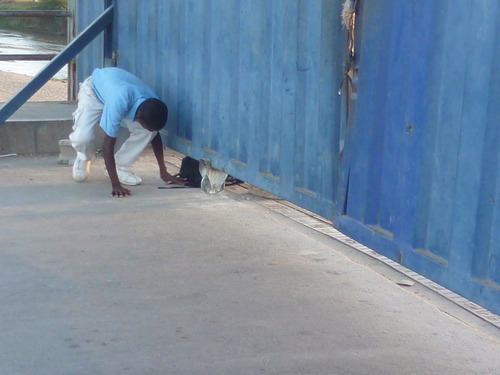
A Haitian school boy scrambles under a border crossing to go to school in the Dominican Republic. Photo by Lisa Daugherty
By Amy Rhoades
Imagine for a minute that you’re seven years old, like the young boy in the photograph. Each morning you wake up at 6.15am and put on a school uniform – not just any uniform, but the school uniform of another country’s educational system. You walk half a kilometer until you reach a gate – not just any gate, but an international gate defining the border between two countries. The border is closed, so you crawl under the gate. You barely fit. Then you walk another two and a half kilometers and slide into your chair: the school day begins.
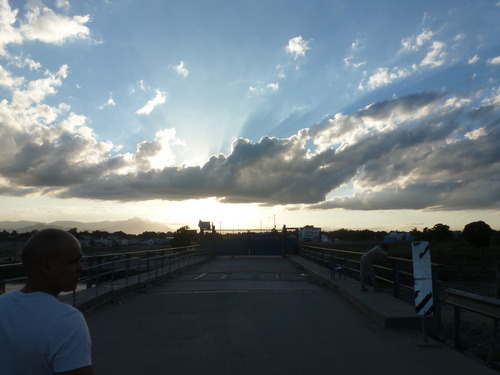
Border crossing that children from Haiti pass under every day to go to school in the Dominican Republic. Photo by Lisa Daugherty
Your teacher is speaking a language you don’t fully understand, but you do your best to keep up. Sometimes your classmates make fun of you because your skin color is different, because your accent is different, because, well, you are different. You remember the words of your grandmother and try not to let it bother you. At the end of the school day, you’ll walk back along the dusty roads and crawl back under the border gate and return to your country. Tomorrow morning you’ll do it all again. Why? Because you know that education is the key that unlocks doors and you know that access to such education isn’t available on your side of the gate.
It’s another form of migration really, only that the boy is not seeking economic opportunity on the other side of the fence, but the tools for a better life.
If this were a hypothetical story, it would carry a nice takeaway lesson about the value of education and dedication to one’s studies. But this story is far from hypothetical; rather it’s a reality for countless children on the island of Hispaniola who cross every day from Haiti to the Dominican Republic to go to school. The irony is striking; Haiti, the country that has received more than $9 billion in international aid since the devastating earthquake three years ago, finds its children slipping across the border to their uncomfortable neighbors in pursuit of a better education.
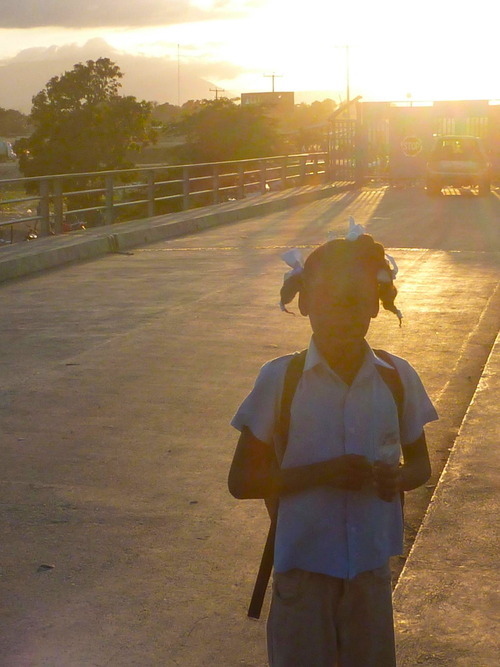
A Haitian school girl has made it over the border to go to school in the Dominican Republic. Photo by Lisa Daugherty
“Their desire and motivation to study is undaunted, even given the tremendous obstacles they face in getting to class each day,” says Lisa Daugherty, project manager at Entrena, speaking of these Hispaniola’s youngest border crossers. Entrena is a Dominican-based training organization that works with vulnerable youth, particularly undocumented Haitians in the Dominican Republic, to provide academic support, life skills and vocational training. In a country where 36 percent of children do not finish primary school, this extra-curricular support can make a world of difference by equipping students with the skills needed to succeed both academically and professionally.
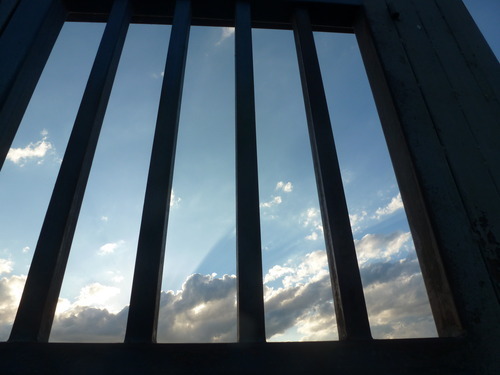
A threatening sky framed by the border crossing to the Dominican Republic. Photo by Lisa Daugherty of Entrena
For Jean-Claude Laurent, (not his real name), a non-resident international commuter to his third grade class, his concerns are far more urgent: What happens next year when he can’t fit under the border gate?
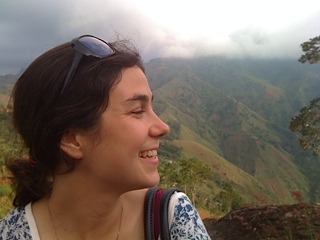
Amy Rhoades is an education and skills development specialist, based on the island of Hispaniola. Email Amy.Rhoades [@] Gmail.com
//